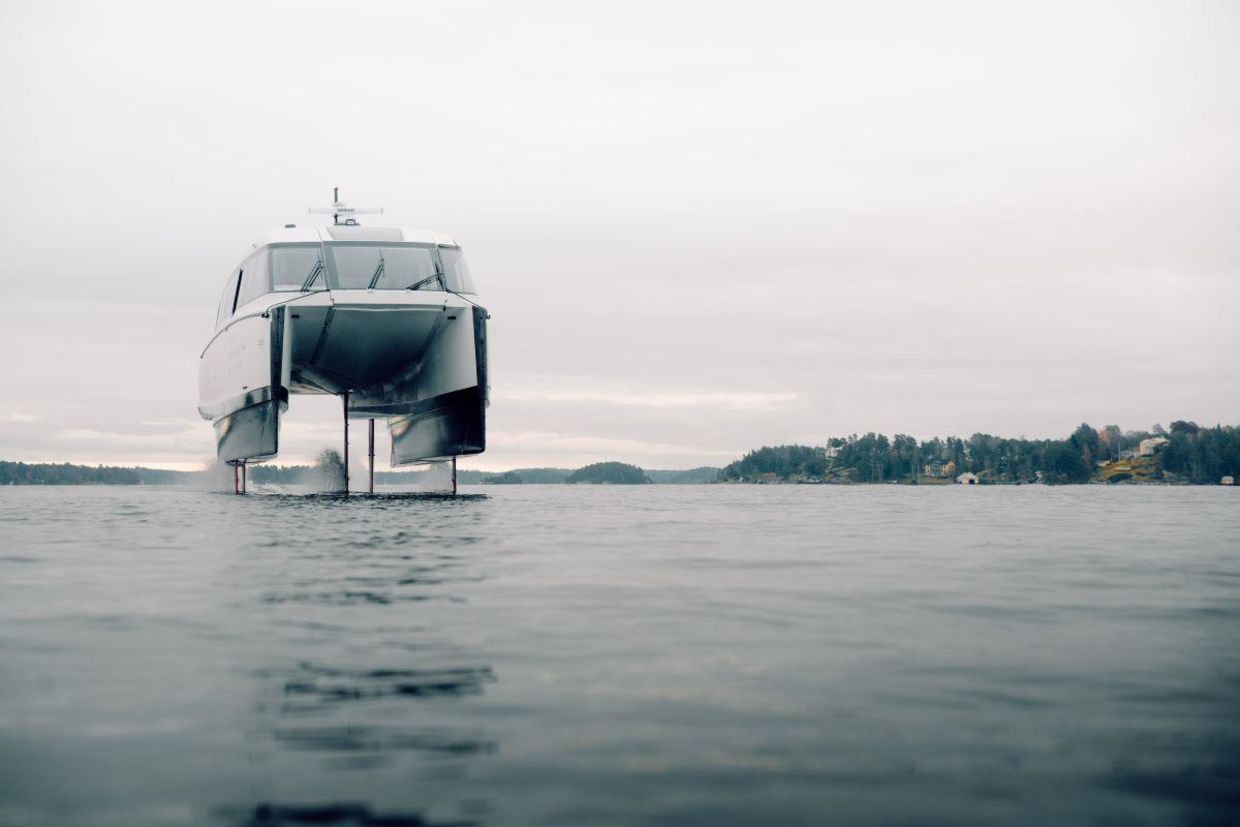Flying Electric Ferry Ready for Liftoff in New Zealand
This hydrofoil ferry is ready for its first commercial rollout.

(Courtesy Candella)
Hydrofoil technology, a type of technology that lifts boats above the water as they move, has been around for almost a century. Now, as electric vehicles of all sorts are becoming more available, a Swedish company has revolutionized water travel by creating a hydrofoil ferry that runs on electricity.
The first commercial rollout will shuttle workers from New Zealand’s Meridian, a renewable energy company, across Lake Manapōuri to work and back, reported electrek. It is very fitting that this clean and green technology is being used by one of the cleanest lakes in the world.
Hydrofoil technology
The hydrofoil technology used in Candela’s P-12 water shuttle is the same technology that is used in its world record setting C-8 electric speedboat,according to Euronews. In both cases, computer controlled hydrofoils are used to lift the boat above the water as it moves. However, while the speedboat can only carry a few passengers, the P-12 can carry thirty.
There are a number of things that make Candela’s boat unique in the field of electric water vehicles. For one, the carbon fiber hydro wings enable the boat to fly over the water at a maximum speed of 20 knots (56 kph).
In addition, reported electrek, because the boat moves over the water, and not in it, it reduces energy use by over 80 percent. Likewise, it leaves no wake in the water. This could make the ferries particularly useful in places like Venic, where water vehicles are required to travel at a slow speed so that their wake does not damage the historical buildings lining the canals.
An environmentally friendly choice
Beyond its speed and lack of wake, the P-12 is also efficient and environmentally friendly. As mentioned above, it is an electric vehicle. However, unlike other electric watercraft, Candela’s ferry uses an automotive style charger, which is much cheaper than the huge megawatt chargers other electric ferries use, and in addition does not require changing dock infrastructure to install.
Erik Eklund, Candela’s director for commercial vessels told electrek: “With the P-12, we’re not just offering a faster, more comfortable electric alternative to fossil fuel-powered vessels. We enable operators to make the switch to sustainable vessels that are cost-effective and profitable, a crucial step towards clean oceans and lakes.”
While the ferry has been trialed in Canada, the first commercial rollout in New Zealand shows just how eco-friendly the ferry can be, reported Express,. In fact, the switch will save an estimated 240 tons of emissions per year.
Tania Palmer, general manager of generation at Meridian Energy, told Express that the introduction of the hydrofoil is part of a push to reduce emissions from internal transport, and this move will contribute to Meridian’s goal of halving its emissions by 2030.
“The Candela P-12 is an exciting replacement for the diesel ferry we currently use to transport people across the lake to the power station,” she said.“It’ll drastically reduce emissions and, at the same time, give our team what’s arguably the best and most spectacular commute in the world.”
People have used bodies of water for transportation for centuries. However, with the advent of automobiles and airplanes, travel on water has somewhat fallen out of favor. And yet, as the P-12 illustrates, using the world’s waterways has its benefits, especially as technology becomes more and more environmentally friendly.
YOU MIGHT ALSO LIKE:
New Seaglider Could Transform Coastal Travel
Amsterdam is Testing Autonomous EV Boats on its Canals
This Cruise Line Will Run on Biogas Made From Dead Fish







